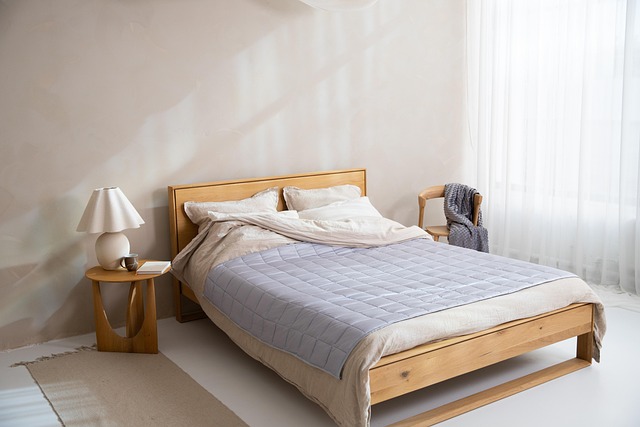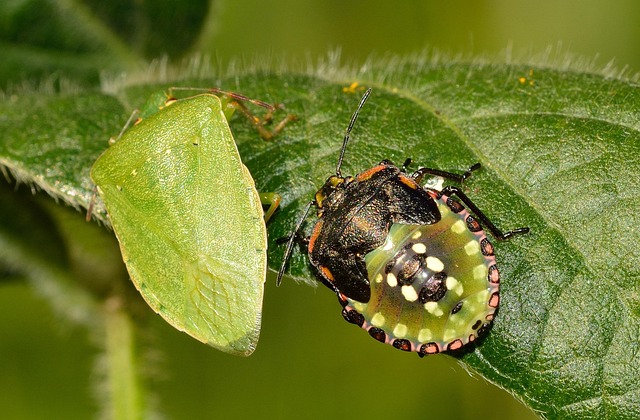Bed bug heat treatment is an eco-friendly, effective method using high temperatures to eliminate bed bugs from homes and buildings, where traditional treatments may fail. It's faster, comprehensive, non-toxic, and safe for pets and people, with higher success rates than chemical alone. Preparation involves cleaning, sealing clutter, and informing household members. The process includes inspection, heat application (120-140°F), decontamination, and preventative measures to deter future infestations. DIY attempts require proper equipment and procedures; mistakes can lead to incomplete decontamination and health risks. Post-treatment care includes deep cleaning, sealing entry points, regular inspections, and protective covers for ongoing protection.
Tired of sleepless nights due to bed bugs? Explore the power of bed bug heat treatment, a comprehensive and effective solution. This guide delves into the science behind this method, offering a detailed bed bug heat treatment process for a pest-free home. From understanding the benefits and limitations to common mistakes to avoid, you’ll learn how to prepare, navigate, and maintain a bed bug-free environment. Take control of your comfort with our ultimate bed bug heat treatment resource.
Understanding Bed Bug Heat Treatment: A Comprehensive Guide

Bed bug heat treatment is a specialized method that utilizes high temperatures to eliminate these persistent pests from homes and buildings. It’s considered one of the most effective and environmentally friendly solutions for bed bug control, as it doesn’t rely on harsh chemicals. The process involves heating the infested areas to levels that are fatal to bed bugs, their eggs, and any other stages of their life cycle.
This method is particularly useful in situations where traditional treatments might not be suitable or have failed. Heat treatment offers a comprehensive approach by penetrating crevices, furniture, and other hard-to-reach spots where bed bugs tend to hide. It ensures that every stage of the bug’s development is targeted, leading to higher success rates compared to chemical treatments alone.
Why Choose Heat as a Bed Bug Control Method?

Bed bugs are resilient creatures, making traditional chemical treatments increasingly challenging. That’s where bed bug heat treatment steps in as a highly effective and eco-friendly solution. Heat kills bed bugs by raising their internal temperature to lethal levels, ensuring a thorough elimination. This method is particularly appealing due to its non-toxic nature, eliminating the risk of exposure to pets, children, or residents.
Compared to chemical sprays, bed bug heat treatment offers a faster and more comprehensive approach. It penetrates into cracks, crevices, and mattresses, reaching areas where bed bugs hide. The process involves specialized equipment that raises the temperature to precisely controlled levels, ensuring both efficiency and safety. This method is now widely recognized as one of the most reliable and long-lasting solutions for ridding homes of these persistent pests.
The Science Behind Bed Bug Heat Elimination

Bed bugs, despite their name, are not particularly attracted to beds but rather to the warmth and carbon dioxide given off by humans during sleep. This is the science behind bed bug heat elimination—a method that leverages temperature as a powerful tool for eradication. Heat treatments involve raising the environment to temperatures that are fatal to these pests, typically above 120°F (49°C). This process ensures that every stage of the bed bug lifecycle, from eggs to adults, is affected. The high heat disrupts their cellular functions, causing them to dry out and die.
Professionals use specialized equipment to deliver this heat evenly throughout infested spaces, including hard-to-reach areas like crevices and furniture seams. This method is particularly effective because bed bugs have evolved to be resistant to many conventional treatments. Heat treatment not only kills the visible bugs but also destroys their eggs and prevents reinfestation, making it a reliable and efficient solution for bed bug heat elimination.
Preparing for Bed Bug Heat Treatment at Home

Preparing for bed bug heat treatment at home involves a series of steps to ensure the process is effective and efficient. First, thoroughly clean all areas of your residence, including bedding, furniture, and floors. Remove any clutter that might provide hiding spots for the bugs. Empty all trash cans and make sure they are sealed tightly. Vacuum extensively to pick up any debris or eggs that may be present.
Before the treatment, consider moving valuable items like electronics and furniture to safe areas away from the treatment zone. Cover exposed surfaces with protective sheets, especially if you have delicate items or furnishings. Make sure all family members understand the procedure and know when they need to be out of the house. This preparation will help minimize disruptions and maximize the success of the bed bug heat treatment.
Step-by-Step Process of Bed Bug Heat Removal

The process of bed bug heat removal is a specialized and effective method for eliminating these pests from residential spaces. It involves a step-by-step approach to ensure thorough and safe treatment. First, professionals inspect all areas affected by bed bugs, identifying their hiding places and determining the extent of the infestation. Next, they prepare the space by removing any potential food sources, such as clutter, and ensuring proper ventilation. The heart of the process is applying heat at specific temperatures and durations to kill all stages of bed bug development—eggs, nymphs, and adults. This typically involves the use of specialized heating equipment that raises the room’s temperature to around 120-140°F (49-60°C), held for a duration sufficient to ensure complete elimination. After heat treatment, professionals conduct a thorough decontamination, including cleaning and sanitizing all surfaces to remove any residual bugs or eggs. Finally, they seal any entry points and apply preventative measures to deter future infestations. This comprehensive approach ensures not only the removal of bed bugs but also prevents their return.
Benefits and Limitations of Heat Treatment for Bed Bugs

Heat treatment is a popular method for bed bug control, offering several significant advantages. It involves raising the temperature in infested areas to levels that are fatal to bed bugs and their eggs. This non-chemical approach is effective because it can eliminate all life stages of the pest, from eggs to adults, with minimal risk to humans or pets. Moreover, heat treatment is environmentally friendly, as it doesn’t leave behind harmful residues or chemicals that could potentially impact indoor air quality. It’s particularly useful for treating hard-to-reach areas and crevices where bed bugs hide, ensuring a comprehensive extermination.
However, there are limitations to consider. Heat treatment may not be suitable for all situations, especially in mixed infestations with other pests or in sensitive environments like hospitals and daycares. Extreme heat can also cause damage to certain materials, such as furniture or clothing, if not properly handled. Additionally, while it is effective, heat treatment can be more costly than some chemical treatments, requiring specialized equipment and trained professionals to ensure safety and optimal results.
Common Mistakes to Avoid During Bed Bug Heat Control

Many homeowners attempting DIY bed bug heat control fall into common traps that can undermine the effectiveness of the treatment or even pose health risks. One major mistake is using subpar equipment, such as cheap heating pads or inadequate temperature monitors. These can fail to reach and sustain the required temperatures, allowing bed bugs to survive and escape.
Another error is insufficient preparation before the heat treatment. Failing to seal all entry points, remove fragile items, and properly ventilate the space can result in incomplete decontamination and potential damage to belongings. Moreover, not following the recommended timing and subsequent inspection protocols can leave surviving bugs unaddressed, leading to a recurrence of the infestation.
Post-Treatment Care: Ensuring a Bed Bug-Free Environment

After undergoing a bed bug heat treatment, proper post-care is essential to maintain a bug-free environment. This includes thoroughly cleaning all affected areas with hot water and bleach to eliminate any remaining eggs or bugs. Vacuuming is also crucial to remove any debris or bugs that may have been dislodged during the treatment process.
It’s important to seal any cracks, crevices, and gaps in furniture and walls to prevent bed bugs from re-entering. Regularly inspecting your bedding and mattresses for any signs of bed bugs or their eggs is another vital step. Using protective covers on mattresses and pillows can also provide an extra layer of defense against future infestations.
